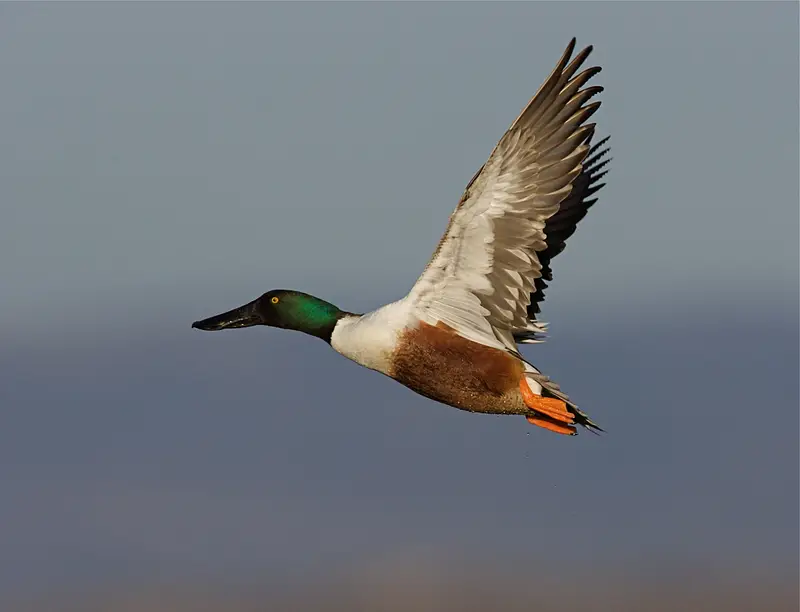About Northern Shoveler
The Northern Shoveler (Spatula Clypeta) is a favorite among 50 Ducks and Tierra De Aves. Often referred to as a “spoonbill” or “spoonies” due to the spoon-like shape of their bills, these ducks tend to prefer more stagnant water bodies compared to other dabbling duck species. Males are easily recognizable with their magnificent green heads, distinctive bills, and large white patches on their undersides. As long-distance migrants, Northern Shovelers can be found as far north as the northern shores of Alaska and as far south as Central America. Our friends at Tierra De Aves have GPS-banded dozens of these magnificent birds all over Mexico, with one recording a 26 hour flight of 1,434 miles.

Identification
Northern Shovelers can be identified by their distinctive spoon-shaped bills, which are wider at the tip than at the base. Males have a striking appearance with bright green heads, white chests, and rusty flanks, while females are mottled brown with a slightly lighter head and neck.
Breeding
Northern Shovelers form bonds that last much longer than many other dabbling duck species. Breeding pairs often form on the wintering grounds and stay together until fall migration takes them back southward.
Behavior
Northern Shovelers are social birds and often form large flocks, particularly during migration and wintering periods. They are dabbling ducks, meaning they feed by tipping forward in the water to reach food rather than diving.
Habitat
The Northern Shoveler ranges from the northern shores of Alaska throughout Central America and everywhere in between. Unlike other dabbling duck species, they are often found in the... less clean waters of North America, happily foraging in stagnant, murky waters. This preference for more stagnant water bodies allows them to thrive in a variety of wetland habitats.
Migration
GPS-tagged Northern Shovelers banded by Tierra De Aves have recorded incredible migratory feats, traveling at speeds close to 100 MPH, at heights above 17,300 feet, and covering tens of thousands of miles from wintering to summer grounds. Their strength while migrating makes them a favorite of 50 Ducks!
No Data Found
How many days tracked
Lorem ipsum dolor sit amet, consectetur adipiscing elit. Ut elit tellus, luctus nec ullamcorper mattis, pulvinar dapibus leo.
Where are they now?
Lorem ipsum dolor sit amet, consectetur adipiscing elit. Ut elit tellus, luctus nec ullamcorper mattis, pulvinar dapibus leo.
No Data Found
No Data Found
Total Number of Data Points for Northern Shoveler
Lorem ipsum dolor sit amet, consectetur adipiscing elit. Ut elit tellus, luctus nec ullamcorper mattis, pulvinar dapibus leo.
Start and End Date Tracking of Northern Shoveler
Lorem ipsum dolor sit amet, consectetur adipiscing elit. Ut elit tellus, luctus nec ullamcorper mattis, pulvinar dapibus leo.
No Data Found
Overall Data from the Center
This is historical data from various sources. This data is available in its full form on our Duck Map in an easily visualizable format.
